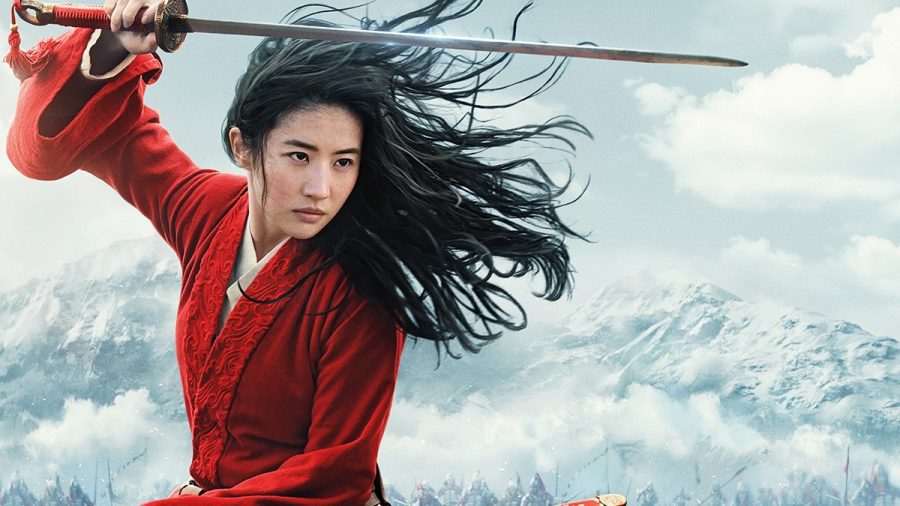Mulan (2020): A mess of hollow representation and real-world controversy
Even before release, there were calls to boycott Disney’s live-action Mulan remake.
September 18, 2020
With films like “Crazy Rich Asians” and “Parasite” getting international recognition, the Asian community was anticipating Disney’s live-action release of the classic animated film “Mulan.” The remake is much different than the original in many ways. It follows a “wuxia” plot, which is a Chinese genre that focuses on the adventures of martial artists, and thus features dynamic martial art battles and aerial stunts with kid-friendly violence. The film also omits the beloved dragon sidekick Mushu and musical solliquoys. Liu Yifei portrays the strong, filial Mulan as a stoic and gallant fighter who breaks down gender barriers, but the plot and use of “qi” as a crutch lets down her character.
“Qi” translates to “life force” and is similar to the Western concept of humorism. It’s associated with Chinese traditional medicine (like acupuncture) and tai chi. With a predominantly white production crew, Disney most likely attempted to equate qi to the Force from “Star Wars” as a way to relate to Western audiences.
In the film’s last battle, with her father’s sword disintegrated, Mulan is no longer fighting for her family’s name and country’s pride, and instead starts fighting for herself. Meanwhile, Mulan’s initial declination to the Emperor’s invitation to be an army officer reinforces the conservative belief of filial piety. Mulan’s belief that she has disgraced her family by not being “true” from a Chinese perspective, comes off as a poor Western interpretation of Chinese culture.
The repetition of “honor” as a theme further builds to this misguided Western perspective, as Mulan never questions what she is fighting for through the movie. Even after encountering the “Maleficent” vibe villain, Xianniang, played by Li Gong, Mulan blindly fights for the same patriarchy that discouraged her use of qi as a woman and limited her social role to being married off. Introducing the witch seemed like an attempt at female solidarity, but her sacrifice of taking an arrow to save Mulan seemed rushed and anticlimactic with no real emotional power.
Before the movie was even released, there were calls to boycott it based on Liu’s backing of the Hong Kong police last September. #BoycottMulan again started to trend after the credits rolled, with a message thanking propaganda departments and a public security bureau in Xinjiang, where the genocidal Uyghur re-education camps are located. Some of the stunning landscapes were also shot in Xinjiang.
The Chinese government has banned the media from covering the movie due to the online backlash.
As a result, this Mulan remake is more frustrating than anything else, as even plot issues are overshadowed by issues related to its production and release. Despite the movie’s intent to inspire young women battling for gender equality, its release was contrasted by the arrest of a 12-year-old girl protester in Hong Kong that went viral. Meanwhile for Liu, while it’s unknown if she has access to her own social media accounts, she makes it difficult to root for the hero with her own complicity in such brutality.
And of course, boycotting for us as individuals is also challenging, as it means not only abstaining from movies like “Mulan,” but also not using products from fast fashion and top brands, as companies such as Nike and Apple are connected to Uyghur labor, knowingly or unknowingly.
While the 1998 animated film had a warm feminist tone, the live-action remake attempts to appease different audiences and strikes an enigmatic and hollow stance on femininity, family and Chinese cultural values, all while under a cloud of controversy.


